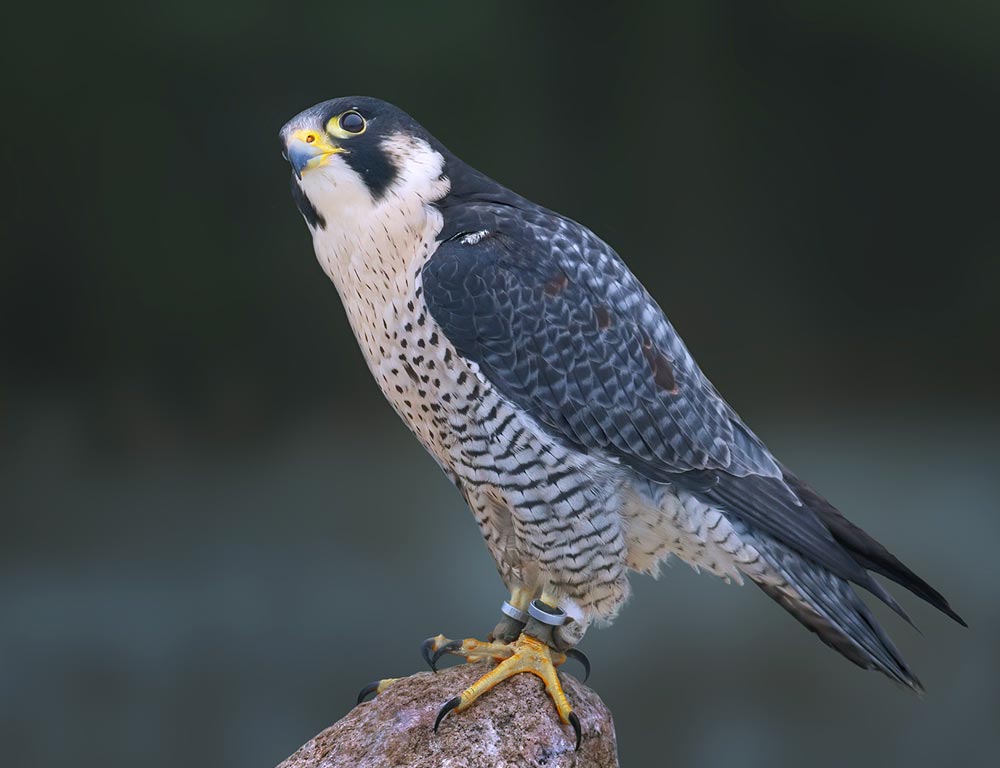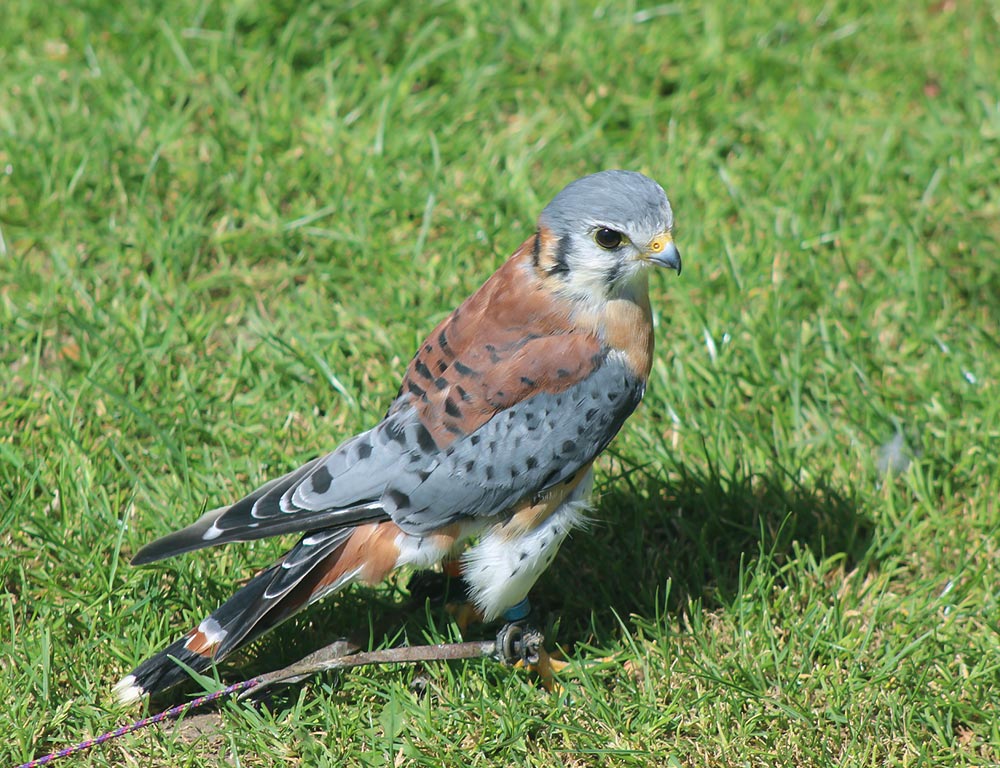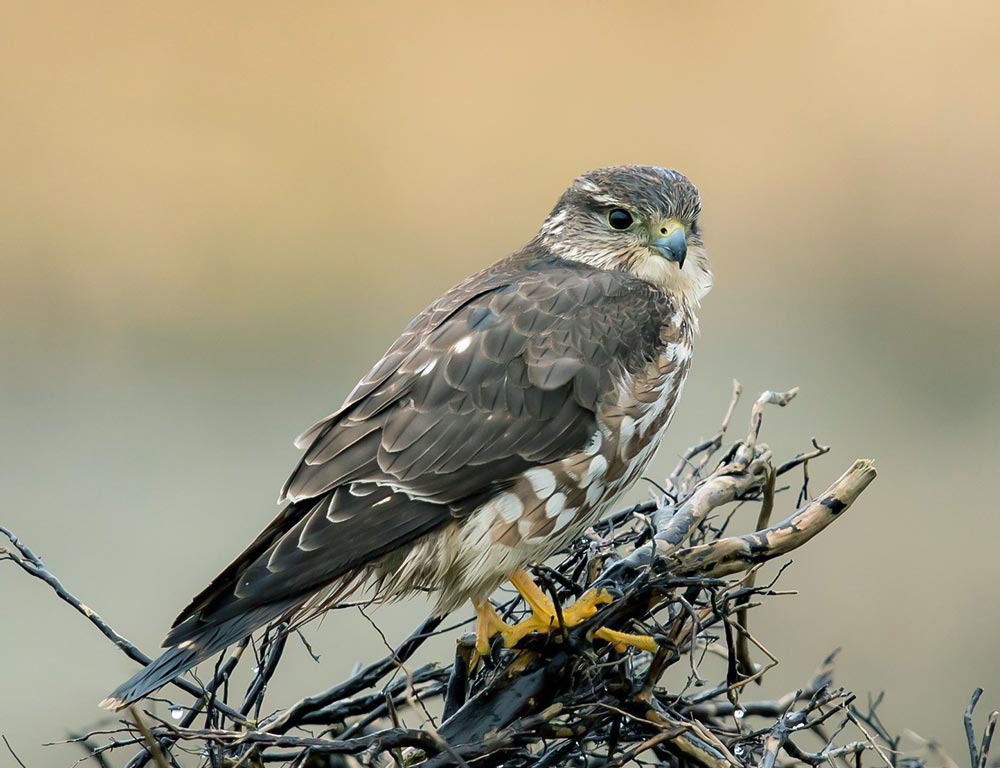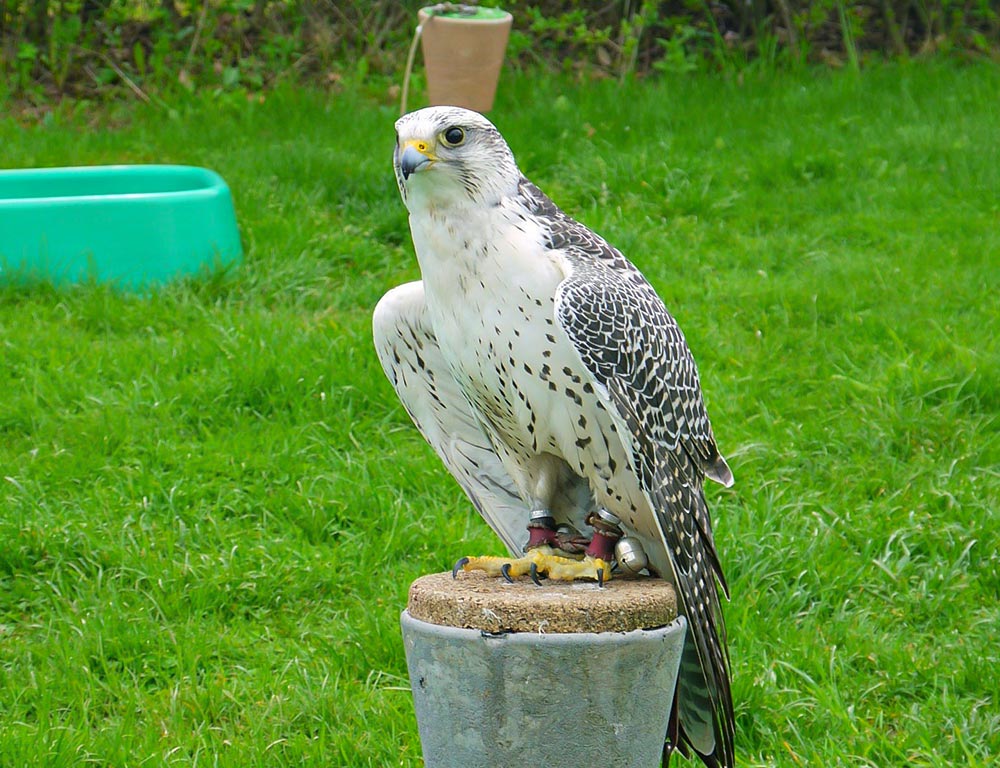Falcons in Michigan showcase a captivating intersection of wildlife and habitat diversity within the state.
While Michigan may not boast an extensive roster of falcon species, the ones present, such as the Peregrine Falcon and American Kestrel, contribute significantly to the ecosystem.
These remarkable birds of prey navigate Michigan’s varied landscapes, from urban environments to open fields, embodying the adaptability required for survival.
As we delve into the world of falcons in Michigan, we’ll explore their distinct characteristics, nesting behaviors, and the challenges they face.
Each species adds a unique chapter to Michigan’s natural narrative, from the exhilarating hunting dives of the Peregrine Falcon to the agile hovering of the American Kestrel.
Why There Are Not So Many Species of Falcons in Michigan?
The species distribution in any given area is influenced by a combination of ecological, environmental, and geographical factors.
In the case of falcons in Michigan, several reasons may contribute to the relatively low diversity of falcon species in the state:
Habitat Suitability
Different species of falcons have specific habitat requirements. Michigan may not offer the ideal conditions for certain falcon species to thrive.
For example, some falcons prefer open grasslands or arid regions, which may not be prevalent in Michigan.
Food Availability
Falcons are carnivorous birds of prey, and their presence is often linked to the availability of suitable prey species. If the local environment does not support an abundance of prey, such as birds and small mammals, falcon populations may be limited.
Migration Patterns
Some falcon species are migratory and may only visit certain areas during specific times of the year.
The apparent lack of diversity in falcon species in Michigan might be due to the fact that certain species are only transient visitors rather than year-round residents.
Climate and Weather Conditions
Falcons may be adapted to specific climate and weather conditions. Michigan’s climate, which includes cold winters, may not be conducive to some falcon species that thrive in warmer climates.
Competition with Other Raptors
Michigan might already be inhabited by other prey birds occupying similar ecological niches. Competition for resources, including nesting sites and food, can limit the number of falcon species in a given area.
Historical Factors
Historical events, such as habitat changes, human influence, or population declines, could have impacted falcon populations in the past, leading to the current distribution.
It’s important to note that the absence of certain falcon species in Michigan doesn’t necessarily indicate a lack of suitability for all falcons. It may simply reflect the specific combination of factors that have shaped the region’s ecology.
Additionally, bird populations and distributions can change over time due to various factors, including human activities and conservation efforts.
4 Falcons in Michigan
There are initially four species types of Falcons in Michigan, each with significant characteristics and habits. Here, we will learn about these four types’ essential details.
1. Peregrine Falcon

- Scientific Name: Falco peregrinus
- Category: Bird of prey
- Population: Recovering after decline due to pesticides; stable in some regions
- Life Span: Up to 15 years
- Size: Approximately 15 to 20 inches in length
- Weight: 1.5 to 3.5 pounds
- Food: Primarily birds, particularly pigeons, ducks, and other medium-sized birds
- Wingspan: 3.3 to 3.6 feet
- Status: Recovered from endangered status; listed as “Least Concern”
The Peregrine Falcon, once severely impacted by the use of pesticides like DDT, has made a remarkable recovery in recent years.
These birds are renowned for their incredible speed and are one of the fastest animals on the planet, reaching speeds of over 240 miles per hour during their hunting dives.
Peregrine Falcons primarily feed on birds, particularly pigeons and ducks. They have adapted well to urban environments, often nesting on tall structures like buildings and bridges.
Peregrines are known for their aerial hunting prowess, capturing prey mid-air with precise and powerful dives. They form strong pair bonds and engage in elaborate courtship displays.
The population has rebounded due to conservation efforts, and the Peregrine Falcon is no longer listed as endangered.
2. American Kestrel

- Scientific Name: Falco sparverius
- Category: Falconidae
- Population: Stable, common throughout North America
- Life Span: 5 to 10 years
- Size: 8 to 12 inches in length
- Weight: 3.5 to 5.8 ounces
- Food: Insects, small mammals, birds, and reptiles
- Wingspan: 20 to 24 inches
- Status: Listed as “Least Concern”
The American Kestrel is a small and colorful falcon that is widespread across North America, including Michigan. These falcons are often found in various habitats, from open fields to urban areas.
American Kestrels are adaptable hunters with a diverse diet that includes insects, small mammals, birds, and reptiles.
These birds are known for hovering while hunting, a distinctive trait among raptors. The American Kestrel is sexually dimorphic, with males displaying more vibrant plumage.
They are cavity nesters, using abandoned woodpecker holes or nest boxes for breeding.
The population of American Kestrels is generally stable, and they are considered one of the more common falcons in North America. Their ability to adapt to various environments contributes to their widespread distribution and success.
3. Merlin

- Scientific Name: Falco columbarius
- Category: Falconidae
- Population: Varied, declining in some regions
- Life Span: Typically 5 to 10 years
- Size: 9 to 13 inches in length
- Weight: 5.6 to 8.5 ounces
- Food: Small birds, insects, and occasionally bats
- Wingspan: 20 to 26 inches
- Status: Generally stable, some regional concerns
The Merlin is a small and agile falcon found across North America, including Michigan. These birds are known for their rapid flight and versatility in hunting, preying on small birds, insects, and occasionally bats.
Merlins are often observed in open country, grasslands, and urban areas, and they are known for their ability to pursue prey both in flight and on the ground.
Merlins typically nest in trees or on cliffs and may use old crow or raptor nests. They are known for their aggressive behavior during the breeding season, vigorously defending their territories.
While the global population is generally stable, some regional populations may face declines, possibly due to habitat loss and changes in prey availability.
4. Gyrfalcon

- Scientific Name: Falco rusticolus
- Category: Falconidae
- Population: Generally stable, with some regional variations
- Life Span: 7 to 15 years
- Size: 19 to 24 inches in length
- Weight: 1.5 to 4 pounds
- Food: Mainly birds, especially ptarmigan, ducks, and seabirds
- Wingspan: 43 to 51 inches
- Status: Least Concern globally, but some subpopulations may face threats
The Gyrfalcon is the largest falcon species inhabiting circumpolar regions, including the Arctic. While not as common in Michigan, Gyrfalcons can be found in some northern parts of the state.
They are highly adapted to cold environments and have a varied diet, including birds such as ptarmigans, ducks, and seabirds.
Gyrfalcons exhibit different color morphs, ranging from dark gray to nearly pure white, with the white morph being well-suited for Arctic habitats. Their large size and powerful flight make them effective hunters in open landscapes.
Globally, Gyrfalcon populations are considered the least concerned, but some subpopulations may face threats due to habitat degradation and disturbance.
In Michigan, their presence is likely limited to specific northern regions where the environment suits their lifestyle.
How to Preserve Falcons in Michigan?
Preserving falcons in Michigan requires a comprehensive approach that addresses various factors impacting their populations. Conservation efforts should focus on habitat protection, reducing human-induced threats, and promoting awareness.
Here are six descriptive points outlining strategies for preserving falcons in Michigan:
Habitat Preservation and Restoration
Identify and protect critical falcon habitats, such as cliffs, tall trees, and open landscapes, ensuring that these areas remain undisturbed.
Implement habitat restoration projects to enhance nesting sites and foraging areas, especially in regions with declining populations.
Mitigating Human Disturbance
Implement and enforce regulations to minimize human disturbance during the breeding season, preventing nesting and feeding behavior disruptions.
Educate the public about the importance of maintaining a respectful distance from falcon nesting sites, including outdoor enthusiasts and bird watchers.
Reducing Pesticide Use
Monitor and regulate the use of pesticides in areas frequented by falcons, as these chemicals can harm their reproductive success and overall health.
Promote alternative pest control methods that are less harmful to the environment and wildlife.
Nest Box Programs
Establish and maintain nest box programs, especially for species like the American Kestrel, providing artificial nesting sites in areas where natural cavities may be limited.
Monitor and maintain the nest boxes regularly to ensure their suitability and safety for falcon breeding.
Community Engagement and Education
Conduct outreach programs in local communities, schools, and nature centers to raise awareness about the importance of falcons in the ecosystem.
Foster a sense of stewardship by involving the public in citizen science projects, monitoring falcon populations, and reporting sightings.
Research and Monitoring
Support ongoing research initiatives to understand better the ecology, behavior, and migration patterns of falcons in Michigan.
Establish long-term monitoring programs to track population trends, identify potential threats, and assess the effectiveness of conservation measures.
By implementing these strategies, Michigan can contribute to preserving falcons, ensuring their continued presence and ecological roles in the state.
Collaborative efforts involving government agencies, conservation organizations, researchers, and the public are crucial for the success of these initiatives.
Wrapping Up
Preserving falcons in Michigan demands a concerted effort that encompasses habitat conservation, mitigation of human disturbances, and proactive education.
By embracing habitat preservation initiatives, minimizing pesticide use, and engaging in community outreach, Michigan can foster an environment where these majestic birds of prey can flourish.
Implementing nest box programs and ongoing research endeavors further contribute to the conservation landscape.
Through collaborative endeavors, Michigan can ensure that the skies remain graced, enriching the state’s biodiversity and providing future generations with the opportunity to marvel at the grace and beauty of these remarkable raptors.
Preserving falcons is not just a commitment to safeguarding a species but an investment in the health and resilience of Michigan’s natural heritage.